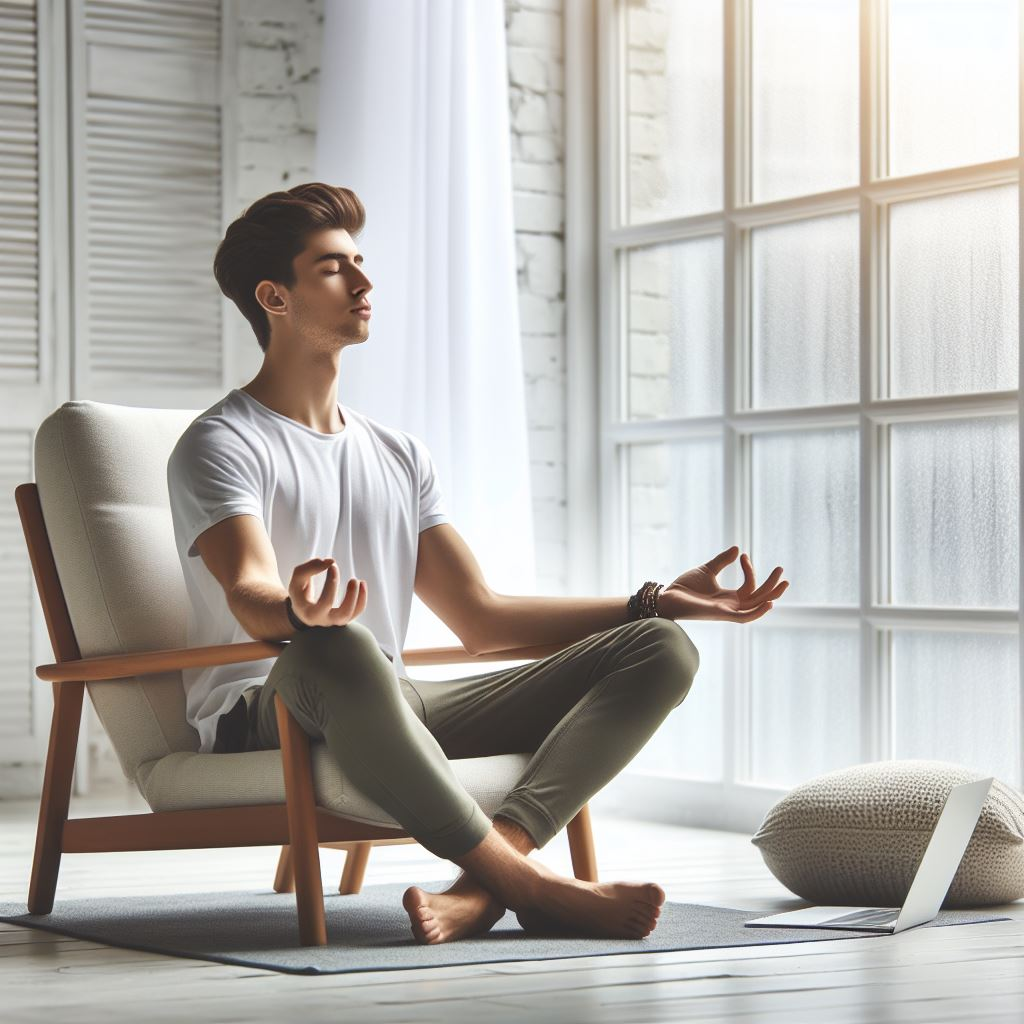Meditation is something everyone can do, here’s how:
Meditation is simpler (and harder) than most people think. Read these steps, make sure you’re somewhere where you can relax into this process, set a timer, and give it a shot:
1) Take a seat
Find place to sit that feels calm and quiet where you won’t be disturbed.
2) Set a time limit
If you’re just beginning, it can help to choose a short time, such as five or 10 minutes.
3) Position your body
You can sit in a chair with your feet on the floor, you can sit loosely cross-legged, you can kneel—all are fine. Just make sure you are stable and in a position you can stay in for a while.
4) Focus your breath
Follow the sensation of your breath as it goes in and as it goes out. Take even breaths. Notice the effects in your body.
5) Notice when your mind has wandered
Inevitably, your attention will leave the breath and wander to other places. When you get around to noticing that your mind has wandered—in a few seconds, a minute, five minutes—simply return your attention to the breath.
6) Be kind to your wandering mind
Don’t judge yourself or obsess over the content of the thoughts you find yourself lost in. Just come back.
7) Close with kindness
When you’re ready, gently lift your gaze (if your eyes are closed, open them). Take a moment and notice any sounds in the environment. Notice how your body feels right now. Notice your thoughts and emotions. Take a deep breath and let it all go.
That’s it! That’s the practice. You focus your attention, your mind wanders, you bring it back, and you try to do it as kindly as possible (as many times as you need to).
How Much Should I Meditate?
Meditation is no more complicated than what we’ve described above. It is that simple … and that challenging. It’s also powerful and worth it. The key is to commit to sit every day, even if it’s for five minutes. The most important moment in your meditation practice is the moment you sit down to do it. Because right then you’re saying to yourself that you believe in change, you believe in caring for yourself, and you’re making it real. You’re not just holding some value like mindfulness or compassion in the abstract, but really making it real.
Frequently Asked Questions About Mindfulness Meditation, Answered
When you’re learning how to meditate, it’s natural for questions to pop up often. These answers may ease your mind.
1) If I have an itch, can I scratch it?
Yes—however, first try scratching it with your mind before using your fingers.
2) Should I breathe fast or slow or in between?
Only worry if you’ve stopped breathing. Otherwise, you’re doing fine. Breath in whatever way feels comfortable to you.
3) Should my eyes be open or closed?
No hard-and-fast rules. Try both. If open, not too wide, and with a soft, slightly downward gaze, not focusing on anything in particular. If closed, not too hard, and not imagining anything in particular in your mind’s eye.
4) Is it possible I’m someone who just CANNOT meditate?
When you find yourself asking that question, your meditation has officially begun. Everyone wonders that. Notice it. Escort your attention back to your object of focus (the breath). When you’re lost and questioning again, come back to the breathe again. That’s the practice. There’s no limit to the number of times you can be distracted and come back to the breath. Meditating is not a race to perfection—It’s returning again and again to the breath.
5) Is it better to practice in a group or by myself?
Both are great! It’s enormously supportive to meditate with others. And, practicing on your own builds discipline.
6) What’s the best time of day to meditate? Whatever works. Consider your circumstances: children, pets, work. Experiment. But watch out. If you always choose the most convenient time, it will usually be tomorrow.
7) What if I get sexually (and physically) aroused by thoughts in my head?
No big deal. Meditation stokes the imagination. In time, every thought and sensation will pop up (so to speak). And come back. Same old story. Release the thought, bring awareness and receptivity to body sensations, bring attention back to your chosen object (the breath, in this case). Repeat.
8) Do you have any tips on integrating pets into meditation practice?
While meditating, we don’t have to fight off distractions like a knight slaying dragons. If your dog or cat comes into the room and barks and meows and brushes up against you or settles down on a part of your cushion, no big deal. Let it be. What works less well is to interrupt your session to relate to them. If that’s what’s going to happen, try to find a way to avoid their interrupting your practice.
While meditation isn’t a cure-all, it can certainly provide some much-needed calmness and balance in your life. Sometimes, that’s all we need to make better choices for ourselves, our families, and our communities. And the most important tools you can bring with you to your meditation practice are a little patience, some kindness for yourself, and a comfortable place to sit.



























